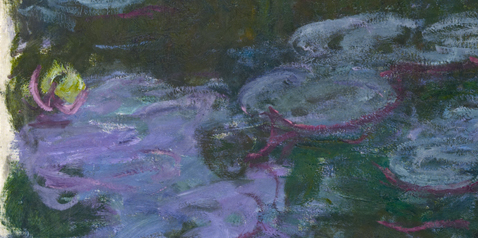
CLAUDE MONET
Claude Monet (Paris 1840–1926 Giverny) grew up in Le Havre, where the artist Eugène Boudin encouraged him to devote himself to painting and go to Paris. There, Monet joined the painters of the ‘Académie Suisse’ and came into contact with the artists Frédéric Bazille, Pierre-Auguste Renoir and Alfred Sisley; soon he was painting alongside them in the open air. In 1874 Monet was represented at the first Impressionist exhibition. Indeed it was the painting he exhibited there with the title Impression. Soleil levant (Impression. Sunrise) that helped to give the group of young artists their name.
From 1880 Monet gradually withdrew from the circle of Impressionist painters and settled in Giverny. Here, over the years, he laid out a large garden, in which from now on he painted numerous flower and waterlily pictures.
Since the very outset of his artistic career Monet had been interested in the reproduction of atmospheric moods. He sought to capture not only the local colour of things, but the way their colours constantly changed under the influence of air and haze: the momentary, ever temporary colour impression was to be given permanent expression through painting. In the process the actual motif became no more than an aid, becoming the bearer and the surface for the depiction of colour effects and changes. In particular Monet’s final paintings, dating from the early 1920s, take increasingly little account of the forms imposed by nature, they are so to speak abstracted and come across mainly as colour spaces. With his work, Monet paved the way for Modernism all the way to Abstraction.


